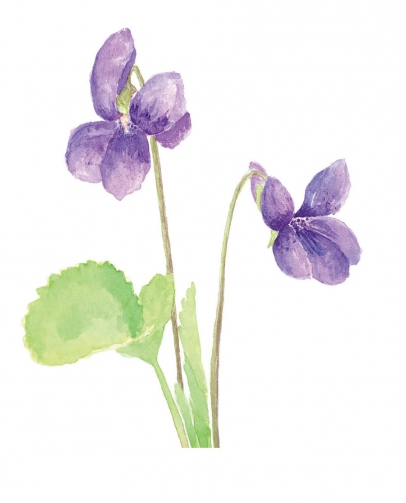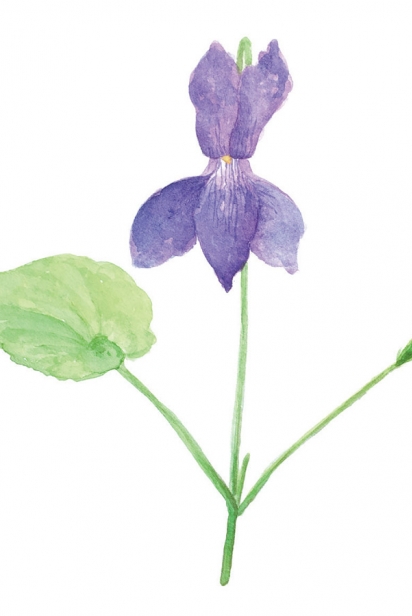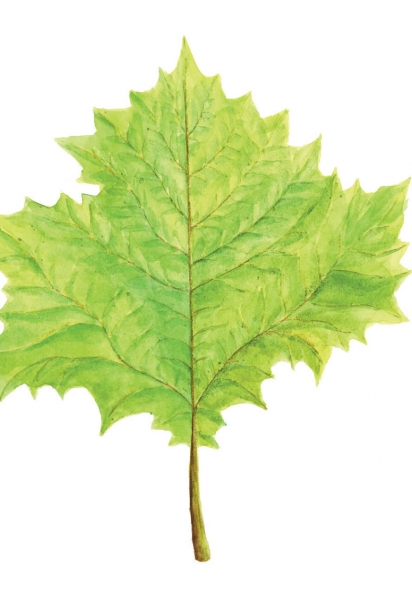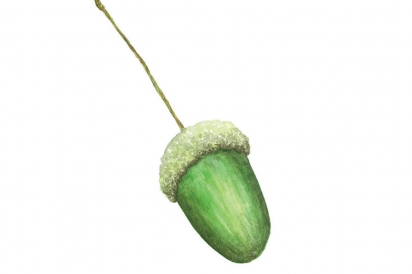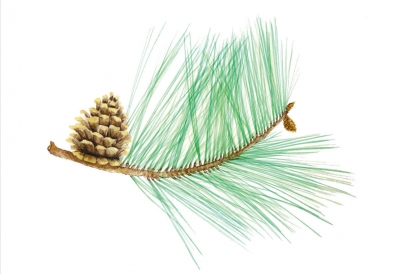A Walk in the Piney Woods
Connecting the dots of hog and heritage
Drive north on U.S. Route 59 out of Houston, and as you slowly roll through small towns like New Caney, Splendora and Midline, then cross the Trinity River, you enter a world of white hickory and post oaks, black tupelo and magnolia, of bald cypress and Spanish moss. Leave your car behind and walk into the woods. A spring breeze touches your skin as you part live oak leaves and loblolly pine needles like you’re crossing into a place very old and ever-renewed, a landscape you forgot until now, and then it all comes coursing back like streams rushing between hills, waters of the bottomlands settling into your history.
Over 40 years ago, H.C. Wengler, a farmer walking through East Texas woods, found Red Wattle hogs foraging the forest floor. These descendants of Eurasian wild boars, closer to burnt orange, some with black specks and patches, would have nosed through dark loam for sumac and sycamore leaves, clover and cowpea, pecans and black walnuts, juniper berries and pine cones, acorns and wild violet leaves. The Red Wattle carries in its blood the very earthy, ground-layer taste of the Piney Woods and Post Oak Savannah, and to raise and harvest and then eat this pig is to taste and know what it means to live in this part of the world.
Yet the arrival of the Red Wattle in Texas reads like a make-your-own mystery novel. As you dig through the records you find some say the Red Wattle, the only pig in the world to still have a fleshy caruncle on its neck, originated in the South Pacific, an island off the coast of Australia. Others whisper three piglets were stolen from a medical school in Switzerland and snuck off to the United States. There are stories of French colonists, Spanish farmers, of 18th and 19th century backyards in New Orleans, and a Texas big game hunter ….
What we know for sure is that Mr. H.C. Wengler bred two Red Wattle sows with a Duroc boar, and across many generations the “Wengler Red Waddle” entered the story. He was not alone in his discovery. Robert Prentice found a herd of Red Wattles and bred these with Wengler’s pigs to create the Endow Farm Wattle Hogs. Why all this attention and breeding after the Red Wattle had become lost in history? Considered hardy, a wonderful forager, gentle and easy to raise, they also are so, so delicious. Excellent foraging makes for a robust, herbaceous meat.
And here’s where our mystery novel takes another turn. The Red Wattle is on the Livestock Conservancy list of threatened species and is included in the Slow Food Ark of Taste as an endangered animal. They are not the pigs of feedlots, not the pigs of mass production, and therefore as with many flora and fauna in the world, are not protected, not seen as necessary. Which leads to the possibly odd yet real conclusion that to preserve this pig, to not let its species disappear in the radical-logic of a monoculture food system, we have to raise them in the open, so we encourage their love of foraging, and then we must slaughter them. We have to eat the Red Wattle.
And not just the Red Wattle but all heritage breed animals. And not just for their loins or ribs but for the whole animal.
I sit down one afternoon to talk with Houston’s famed nose-to-tail chef Richard Knight (formerly Feast and Hunky Dory) to drink coffee and talk about the inner parts of animals.
“Seventy-five percent of the dishes at Feast featured offal,” Knight says with a laugh, “including salads.” As we talk, a menu appears in mind—Beef cheek bone in, Roasted Bones, Little Bowl of Hearts, Deviled Kidneys and a Whole Cow Head as one dish. “We live in a throw-away society,” he says, “and we should respect the animal by eating every part of it. After all, it died for you.”
He talks about stripped out, clean bones used in fire for fuel, and some bones pulverized for fertilizer. Using the whole animal leads to the mantra of his cooking: “Do simple stuff well, and don’t be scared of hearts and livers. These things are not just edible, but good—delicious if cooked well, simply, with respect.”
Knight is taking this philosophy into his new venture, Breaking Bread, a pop-up series that features the produce of local farmers, another important part of traditional cooking, of caring for and respecting the entire process of farm to table— and not just the table at a restaurant, but the home as well.
“This is what makes a family,” he says: “shopping at the local farm, the butcher you know, filling up your basket with what’s good and then making the meal as a family—food fusing the family together, to break bread together and talk about the day.” Whether it’s about planting okra or raising pigs, whether it’s a restaurant or home kitchen, Knight emphatically states, “It’s all about the love you put into what you’re doing.”
Knight’s words on family and traditions of cooking the whole animal resonated with me as I thought about my own family, past and present. Before my father’s mother, Kate Harvey, married my grandfather, Tom Harvey; before they sailed across the Atlantic for Nova Scotia, and then farther inland for Detroit, she was Kate Carlyle and lived in Kirkcudbrightshire, Scotland, with her four sisters and father, Thomas, and mother, Mary. My great-grandfather was a flesher in Dumfries, someone who cut away the skin from meat and bone, and then later moved to Kirkdurham and worked as a butcher. His wife, Mary, was known for her potted meats, for her love of trotters boiled, bones removed, then meat and eggs set into the aspic and chilled.
In my own home our kitchen is the heart of our family. Our windows are bordered by azaleas, bougainvillea, lantana and milkweed; my wife, Gabriela, and I are in the kitchen cooking together while our 12-year-old son, Demian, is telling about Vikings and Yu-Gi-Oh. We cook together Warm Pig Head Salad, Crispy Pigs’ Tails, Chopped Chicken Liver on Toast, or steaming bowls of Blood Soup.
Food connects us not only to people and what we make with our hands, but place as well, and though my roots take me back to Scotland, I’ve lived in Houston, Texas for 29 years and I want to cook a Red Wattle hog heart that with its texture and taste speaks of this land, of the Piney Woods and Coastal Bend.


